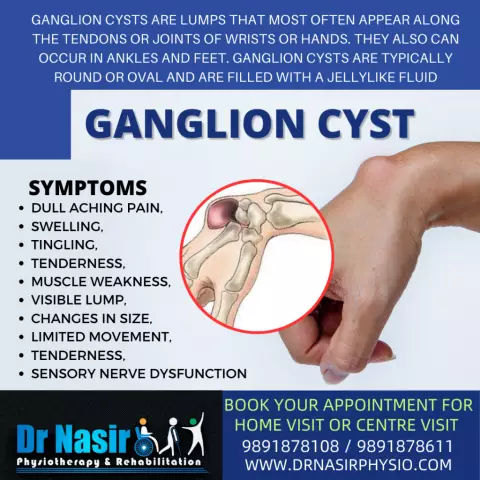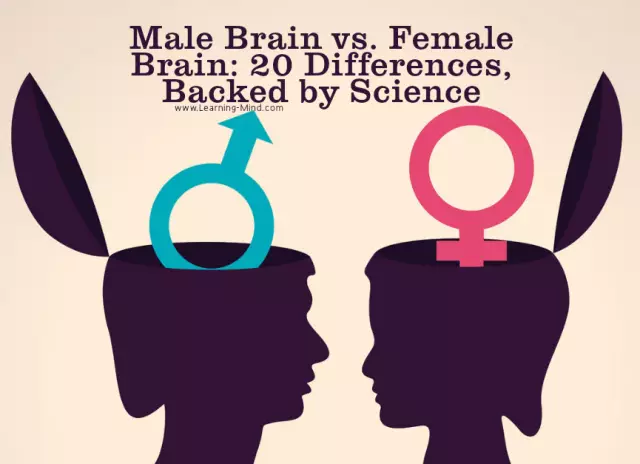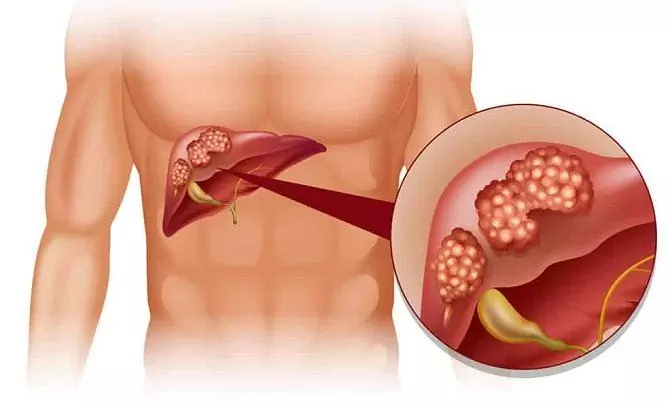- Author Rachel Wainwright [email protected].
- Public 2024-01-15 19:51.
- Last modified 2025-11-02 20:14.
Retrocerebellar cyst of the brain
The content of the article:
- Classification
- What is the danger
- Symptoms
- Manifestations in children
-
Treatment
- Indications and contraindications for surgery
- Surgical methods
- Possible postoperative complications
- Drug treatment
- Video
The retrocerebellar cyst of the brain is a cavity that can be of various sizes, filled with serous fluid.
Cystic formations of the brain are conditionally benign and rarely malignant. The conventionality is explained by the development of a neoplasm in the limited space of the cranium. For this reason, even benign lesions can lead to extremely serious complications.

In some cases, a retrocerebellar cyst does not require treatment, a periodic examination is sufficient to control it
Classification
There are several types of cystic formations of intracerebral localization:
| View | Characteristic |
| Retrocerebellar |
It is formed directly in the brain tissues due to the death of a section of cells. Does not leave its anatomical area, i.e., does not have a tendency to expansive growth. It can occur anywhere in the brain and is often preceded by trauma. |
| Retrocerebellar arachnoid CSF | Arachnoid cysts are located in the corresponding area of the brain (arachnoid meninges). It can rarely communicate with the cerebrospinal fluid system (more often it is isolated and filled with cerebrospinal fluid). |
| Choroid plexus cyst |
An atypical variant that has a congenital character (determined in utero). The neoplasm is formed from the rudiments of vascular tissue and is subsequently located between normally formed vessels (differential diagnosis with aneurysm). |
| Pineal | Education, which is formed strictly in the pineal gland (the clinical picture is associated with a dysfunction of only this part of the brain, since the formation does not grow into neighboring zones). |
What is the danger
Why is the retrocerebellar arachnoid cyst of the brain and other types of intracerebral cystic formations dangerous? Conventionally, two dangerous moments can be distinguished:
- Ischemia of parts of the brain.
- Loss of a number of functions depending on the affected area.
Surgery to remove a tumor is almost always required, since there is a high risk of damage to healthy organ tissues.
Symptoms
Variants of violations depending on the anatomical zone:
| Brain region | Functions | Disorder due to cystic formation |
| Medulla | Centers for the control of breathing and blood circulation, as well as centers for the regulation of swallowing, salivation and some protective reflexes (sneezing, coughing, vomiting) | Vital centers suffer (incompatible with life). Pathology is not subject to surgical treatment. |
| Cerebellum | Balance and coordination centers | Vestibular disorders (unsteadiness of gait, disorientation in space, asthenia, tremor, ataxia) occur. |
| Bridge | The conduction department (reticular formation, motor and sensory nuclei) | Disorders are difficult to classify due to the complexity of the wiring system in this area of the brain. |
| Midbrain | Primary visual and auditory centers, regulation of position in space and body movements |
Impaired skeletal muscle tone. Impaired coordination and speed of movements. |
|
Diencephalon: 1. Thalamus 2. Hypothalamus 3. Epithalamus |
1. End centers of all kinds of sensitivity | 1. Loss or loss of any kind of senses (tactile, tactile, temperature, gustatory). |
| 2. The highest center of nervous and humoral regulation (controls the pituitary gland, which ensures the work of all the endocrine glands of the body) | 2. Violation of thermoregulation. Distortion of the feeling of satiety / hunger. Distortion of the feeling of thirst. Violation of blood pressure, breathing disorder. | |
| 3. Control of sleep / wake function (production of melatonin and serotonin) | 3. Disruption of normal circadian rhythms (insomnia / constant sleepiness, depression). | |
|
Endbrain (cerebral cortex): 1. Frontal lobes 2. Parietal lobes 3. (asymmetry of the right and left sides) 4. Temporal lobe (asymmetry of the right and left sides) 5. Occipital lobes |
1. Control over voluntary movements, speech and higher mental activity. Also, Broca's center (inferior frontal gyrus) is localized here - this is the motor center of speech. |
1. When this department is damaged, "frontal symptoms" appear: euphoria, foolishness, lack of understanding of humor, impossibility of purposeful actions. The patient retains all accumulated experience and knowledge, but he is not able to use them to solve specific problems. |
|
2. Participate in recognition and retrieval from memory of information about the shape of objects, their texture, mass. Gives information about the visual-spatial relationship of the body relative to surrounding objects. There are also centers responsible for invoicing and writing. |
2. Astereognosis - difficulty in recognition of objects by touch. Violation of understanding of the position of the body in space and anosognosia (disturbances in the perception of one's own body). Impaired writing and computing (strict dependence on which of the hemispheres is affected). |
|
| 3. Higher centers of hearing, speech understanding, visual memory and verbal memory. The limbic system (emotions) is also included in this zone. | 3. In case of damage on the right side, the perception of non-verbal auditory stimuli (music) is impaired. With the defeat of the left lobe, a disorder of consciousness, memory and speech production occurs. When the limbic system is damaged, complex partial seizures occur with loss of autonomic, cognitive, and emotional functions. | |
| 4. Higher visual center | 4. In case of violation in this area, central blindness occurs and Anton-Babinsky syndrome (in combination with damage to the parietal lobes) develops - the patient is not aware of his own blindness. |
In addition, with a violation in the cerebrospinal fluid system (arachnoid cystic formations communicating with the ventricles of the brain), hydrocephalus phenomena occur:
- General cerebral manifestations (nausea, vomiting, convulsions).
- Focal symptoms that depend on the exact location of the cyst (visual impairment, impaired motor or sensory regulation).
- Disturbances from the somatic systems (cardiovascular, respiratory) due to a violation of the centers of their regulation.
Manifestations in children
In a child, a cystic formation of this type is congenital and begins to manifest itself from the neonatal period:
- pathological increase in head circumference;
- divergence of the bones of the skull;
- bulging fontanelles;
- mental retardation.
All variants of cysts resolve on their own in extremely rare cases and are characterized by slow progressive growth.
Treatment
Treatment of pathology is not always surgical, with small cysts, only observation and periodic monitoring are indicated (examination using MRI / CT).
Indications and contraindications for surgery
Surgical treatment is indicated in the following situations:
- large sizes of brain neoplasms;
- pronounced clinical picture, which is not relieved by medication;
- signs of malignancy;
- localization in the immediate vicinity of vital centers;
- high values of intracranial pressure;
- violation of the outflow of cerebrospinal fluid and the occurrence of hydrocephalus.
Contraindications (non-specific):
- the presence of inflammation;
- decompensated states (instability of hemodynamics and saturation).
Surgical methods
- Endoscopic Surgery. Most often used for arachnoid cysts. The method is based on the dissection of the cyst and the creation of communication with the brain cisterns for the free outflow of cerebrospinal fluid along natural pathways. Accordingly, the holes on the head are made taking into account the localization of the cyst and the cerebrospinal fluid pathways. Strict control by ultrasound (intraoperative). When cysts are localized in the deep layers of the brain, this operation is not performed.
- Microsurgery. A craniotomy is performed with a layer-by-layer dissection of all tissues. When a cyst bulges into a wound, its puncture is required with sending the contents for cytological and histological examination. The walls of the cyst are carefully excised and also sent for examination. The wound is sutured tightly.
- Liquid shunt operations. This is a less traumatic type of surgery associated with the drainage of the cyst into the extracerebral cavity (cystoperitoneal bypass grafting). In this case, one end of the drainage is installed in the enlarged cavity of the cyst, while the other extends into the abdominal cavity (the sheets of the peritoneum will absorb excess fluid and intracranial pressure will normalize).
- Open surgery (craniotomy). The most commonly used type of surgical intervention, since it gives wide access even to deep-lying tissues.
With pronounced symptoms of hydrocephalus, corrective surgery is indicated:
- liquor shunt operation;
- external ventricular drainage.
In emergency cases, to quickly relieve intracranial pressure and prevent the development of cerebral edema, trepanation of the temporal bone is shown (a single puncture 1.5-2 cm above the temple). In this way, excess fluid will be removed and the signs of swelling will go away.

In some cases, brain cysts are removed endoscopically, that is, by a gentle, atraumatic method
Possible postoperative complications
Complications can develop immediately at the time of surgery or after it:
- Damage to brain tissue with loss of function. Refers to the most serious consequences, since they are not amenable to treatment (changes will persist throughout subsequent life).
- Convulsive syndrome. The cause of its development can be both direct damage to the nerve fiber and the reflex effect of surgical instruments.
- Hemorrhage. There are two variants of this complication: local hemorrhage with the formation of hematomas and total hemorrhage in the brain (stroke).
- Thrombosis. At the end of the operation, to prevent this complication, the patient is injected with heparin, but when large blood clots occur, thrombosis, strokes, pulmonary embolism can occur, which often leads to death.
- Swelling of the brain. Another formidable complication, which in the absence of immediate assistance is fatal. Of particular importance is the compression of the medulla oblongata, since there are vital centers (breath and heart).
Most of the operations have a favorable final outcome.
Drug treatment
The inclusion of conservative therapy depends on the clinical picture (preoperative stage or postoperative):
- Blood pressure normalization (Captopril, Enalapril, Verapamil). This is done for two purposes: normalizing hemodynamics for anesthesia and reducing intracranial pressure.
- Drugs that inhibit the blood coagulation system (anticoagulants). These include Heparin, Antithrombin. It is prescribed for the prevention of thrombosis.
- Nootropics are drugs that restore brain function (effectiveness in many cases is questionable). These include Nootropil, Cerebramine. Appointed only in the postoperative period.
- Antioxidants and vitamin complex are prescribed to restore brain function and enrich it with essential substances.
- Cholesterol-controlling drugs (statins). It is prescribed for two purposes: as one of the components of the treatment of arterial hypertension caused by atherosclerosis, and as a prevention of the formation of fat emboli in the postoperative period.
Video
We offer for viewing a video on the topic of the article.

Anna Kozlova Medical journalist About the author
Education: Rostov State Medical University, specialty "General Medicine".
Found a mistake in the text? Select it and press Ctrl + Enter.






